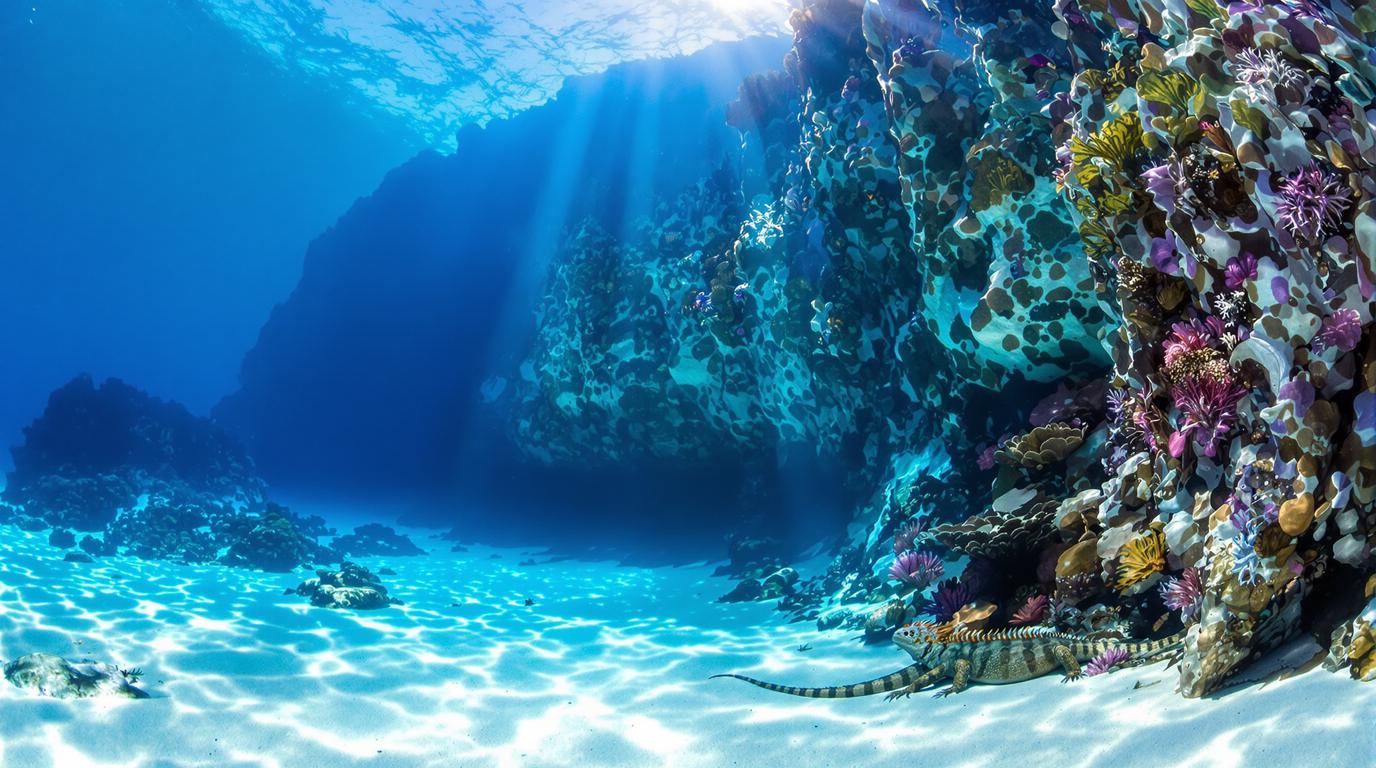Little Cayman’s untouched paradise sits just 90 miles from Cuba, yet remains virtually unknown to most travelers. With just 125 permanent residents, this 10-mile speck in the Caribbean has more iguanas than people and boasts one of the most pristine marine environments on Earth. The island only received electricity in 1990, preserving a tranquility that’s increasingly rare in our hyper-connected world.
Bloody Bay Wall: Jacques Cousteau’s underwater marvel
The legendary oceanographer once declared this vertical coral wall one of the world’s greatest dive sites. Bloody Bay Wall plunges from 20 feet below the surface to over 6,000 feet into the abyss, creating what local dive masters call “the ultimate blue wall.”
“When you’re diving Bloody Bay, you’re literally floating alongside an underwater mountain,” says Mark Sahagian, a dive instructor who’s logged over 1,000 dives here. “The colors are so vivid that first-timers often say it feels like swimming in a living aquarium.”
A bird sanctuary with prehistoric proportions
Booby Pond Nature Reserve hosts one of the Caribbean’s largest colonies of red-footed boobies. Over 4,000 pairs nest here alongside magnificent frigatebirds, creating a spectacle reminiscent of Jurassic Park when they take flight en masse at dusk.
The reserve earned international protection as a Ramsar wetland site, recognizing its critical importance to global biodiversity. Morning visits offer the best wildlife viewing opportunities before the Caribbean heat intensifies.
Point of Sand: The Caribbean’s most perfect beach you’ve never heard of
This powdery stretch on Little Cayman’s eastern tip offers something increasingly rare – a world-class beach with not a single hotel, restaurant, or souvenir shop in sight. The shallow waters graduate through impossible shades of turquoise, making it perfect for snorkeling.
“We sometimes go a whole day without seeing another soul at Point of Sand,” shares local resident Emma Patterson. “It reminds me of what Scotland’s remote islands must have been like before tourism – pure, untouched wilderness.”
Owen Island: Your private Caribbean fantasy
Just offshore from the southern coast lies Owen Island, a miniature uninhabited paradise accessible only by kayak. The 15-minute paddle delivers you to what feels like your own private island, complete with shady palms and crystal waters.
Pack a picnic and spend a day living out Robinson Crusoe fantasies without another soul in sight – an increasingly rare experience in the Caribbean.
An island with more iguanas than people
Little Cayman’s rock iguana population numbers in the thousands, making these prehistoric-looking creatures the island’s true rulers. Protected by law, they have right-of-way on the island’s few roads and often bask in the center of pathways, unfazed by human presence.
Unlike African ecosystems threatened by human encroachment, Little Cayman’s conservation efforts have created a rare sanctuary where wildlife thrives alongside limited human settlement.
The island that time forgot
With no banks, ATMs, or shopping centers, Little Cayman operates at island pace. The weekly supply boat is a community event, with residents gathering to see what fresh produce and goods have arrived from Grand Cayman.
Cell service remains spotty, and internet connections can disappear for days – not through technological limitations but by deliberate choice to preserve the island’s disconnected charm.
Where to stay when paradise calls
The Southern Cross Club offers 12 beachfront bungalows painted in Caribbean pastels. Their all-inclusive packages handle diving logistics, making it the perfect base for underwater exploration. Pirates Point Resort provides a more intimate experience with just seven rooms and legendary homecooked meals.
Unlike Brazil’s popular dolphin beaches, accommodations here focus on simplicity and natural surroundings rather than luxury amenities.
Little Cayman represents the Caribbean as it once was – before cruise ships, before all-inclusive resorts, before Instagram. Its preservation isn’t accidental but the result of strict development limitations and passionate conservationists who recognize that some places deserve to remain unchanged. In an era of overtourism affecting destinations from Homer’s Greek islands to Africa’s safari destinations, Little Cayman offers something increasingly precious – a place where nature still sets the rules.
